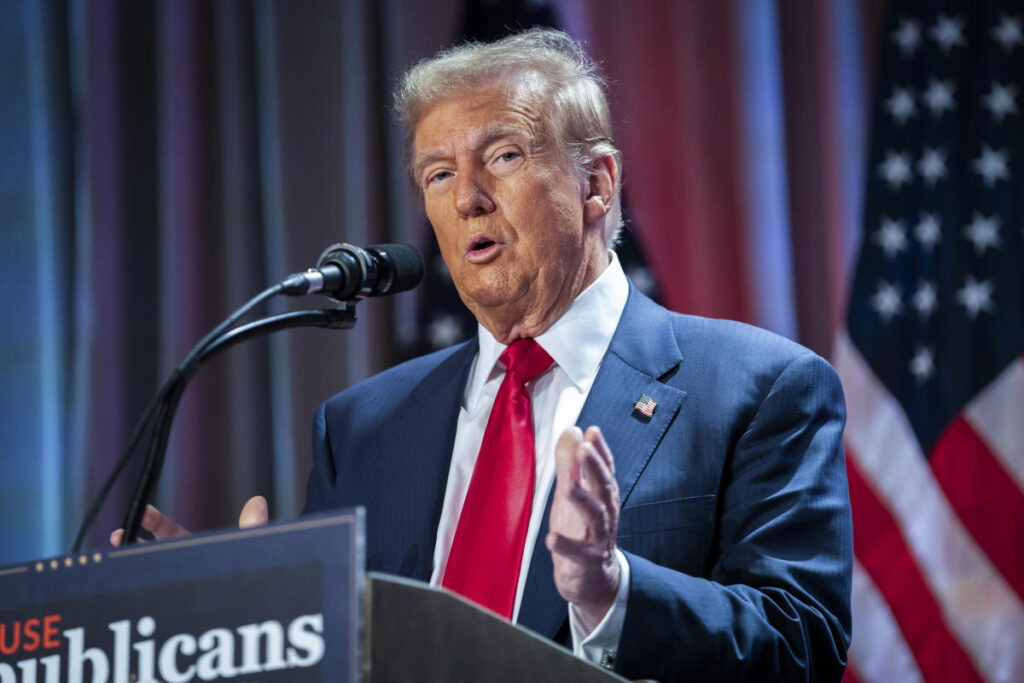On a recent occasion in West Palm Beach, Florida, President-elect Donald Trump issued a strong warning to nine nations affiliated with the BRIC alliance—comprising Brazil, Russia, India, China, South Africa, Egypt, Ethiopia, Iran, and the United Arab Emirates. He threatened to impose 100% tariffs if these countries attempted to undermine the U.S. dollar’s dominance in the global financial system. This warning comes at a critical time when the BRIC nations and various other developing economies are expressing frustration with the U.S.’s prevailing control over international finance. The dollar currently makes up around 58% of the world’s foreign exchange reserves, highlighting its significant role in global trade, particularly for essential commodities like oil.
The concept of “de-dollarization” is gaining traction amongst BRIC nations, intending to reduce reliance on the U.S. currency in international transactions. Trump’s statement on Truth Social emphasized the necessity for these countries to abandon plans for a new BRICS currency or any alternative monetary support, threatening severe tariffs should they continue to consider such actions. His stance mirrors broader sentiments within the alliance that see the U.S. dollar’s hegemonic status as a form of economic imperialism, with countries like Russia leading calls for developing alternatives to dollar-based transactions.
Russian President Vladimir Putin has been vocal in asserting that the U.S. is “weaponizing” the dollar, claiming that the pressure from the U.S. has forced countries to seek alternative economic frameworks. At the October BRIC summit, Putin articulated his perspective that the dollar’s dominance is not a decision made by other nations but rather a strategy employed by U.S. authorities. Consequently, Russia is advocating for a payment system that functions beyond the conventional Western banking structure, SWIFT, in a bid to facilitate trade without the complications of U.S. sanctions.
Despite the systemic challenges posed by a growing coalition of nations aiming to de-emphasize the dollar, Trump believes that the U.S. currency will maintain its supremacy in global trade for the foreseeable future. According to research from the Atlantic Council, there is no immediate threat to the dollar’s dominance; it remains the primary global reserve currency and is expected to be secure in both the near and medium-term. This confidence, however, does not negate the ongoing discussions amongst BRIC countries regarding their economic independence from dollar dependency.
Trump’s recent tariff threat is part of a broader strategy he has employed concerning trade relations with several countries, using the mechanism of tariffs as leverage to address issues he views as critical, such as immigration and drug flow from neighboring nations like Mexico and Canada. Conversations with the leaders of these countries have revealed a mixture of concern and cautious optimism regarding his approach. For instance, Mexican President Claudia Sheinbaum expressed hope that a tariff war could be avoided, while Canadian Prime Minister Justin Trudeau returned from discussions with Trump without definitive assurances about the tariff threats directed specifically at Canada.
In essence, Trump’s bold declarations and negotiation strategies reflect a critical moment in international finance where the U.S. dollar’s status is being actively challenged by an emerging coalition of nations. As BRIC countries explore avenues to diminish U.S. economic influence through initiatives like de-dollarization and alternative payment systems, the response from the U.S., primarily through the Trump administration, appears focused on reinforcing the dollar’s predominance while leveraging economic tactics to assert its interests on the global stage. This interaction between economic power dynamics and international alliances will continue to unfold, with significant implications for global trade and monetary policy in the coming years.

